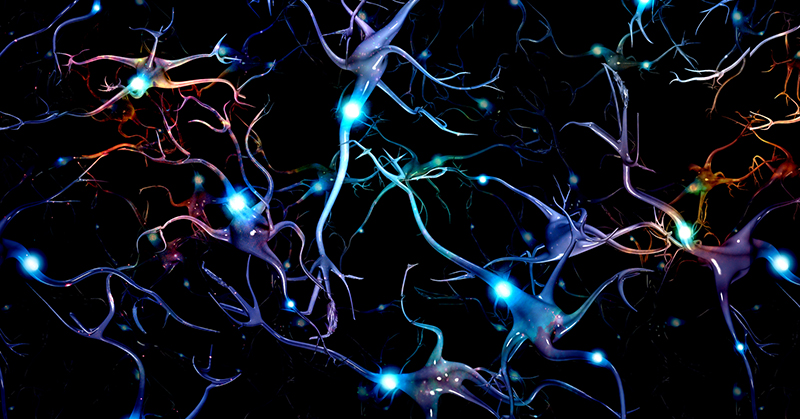How do brain cells die in Alzheimer’s disease? Scientists have pondered this question for decades. Now, at long last, the mystery has been solved thanks to a large team of international scientists.
This breakthrough is important because it lights the way for new treatments that could bring this devastating disease to a halt. Here’s the story…
For many years science has shown that in some cases of Alzheimer’s disease amyloid and tau proteins form plaques and tangles. I say some cases because there are people with amyloid plaques who do not have Alzheimer’s disease and in fact maintain sharp, clear memories all of their days.
When people with Alzheimer’s experience the development of tau tangles and amyloid plaques, these cause harm to brain cells so they can’t communicate and function normally. This progresses until eventually the brain cells die. But the mechanism behind these cell deaths is unclear.
Mouse models of Alzheimer’s are used to help scientists understand the process, but they’ve been unable to replicate what happens in the human form of the disease. How could this be overcome?
Researchers have some thoughts…
A New Alzheimer’s Model
Sriram Balusu, first author of a new paper published in the journal Science in September, explains, saying, “To bridge this gap, we created a new model. We implanted both healthy human and mouse neurons into the brains of Alzheimer’s disease mouse models.
The human cells degenerated much like their counterparts in the human brain, allowing us to study them during brain aging and shine a new light on the processes underlying Alzheimer’s disease.”
The mouse neurons however didn’t display the familiar hallmarks of the disease and loss of brain cells. This suggests human-specific factors are at play in Alzheimer’s that standard mouse models can’t replicate.
Having made this discovery, they used the new model to see if they could uncover the mystery of how diseased brain cells die. In doing so they made a critical breakthrough.
Brain Cells Die by Necroptosis
Cells normally die through a natural, programmed process called apoptosis. If the cell becomes injured or diseased it’s brought to a premature end by another method called necrosis. But their model showed neurons die through a form that combines both types, called necroptosis, an inflammatory mode of cell death that’s regulated by distinct proteins.
And their discovery went even further…
Levels of an RNA gene called MEG3 were strongly increased in human neurons in response to amyloid plaques and tau tangles. Upregulated MEG3 is also seen in Alzheimer’s patients. Strikingly, just the presence of MEG3 alone was enough to trigger the pathway of necroptosis in human neurons.
The researchers went on to see what happens when MEG3 is downregulated. They found this prevented necroptosis and cell death. The discovery represents a crucial advancement in understanding how Alzheimer’s leads to the loss of neurons. It’s not necessarily amyloid plaques that kick off the process, it’s the RNA gene MEG3.
Condensing this in a nutshell, the researchers think when abnormal amyloid builds up it leads to inflammation prompting tau tangles to make their appearance. This leads to the production of MEG3, triggering death by necroptosis.
Paves The Way For New Treatments
Professor Bart De Strooper, the team’s leader, explained, saying, “This is a very important and interesting finding. For the first time we get a clue to how and why neurons die in Alzheimer’s disease. There’s been a lot of speculation for 30 to 40 years, but nobody has been able to pinpoint the mechanisms. It really provides strong evidence it’s this specific suicide pathway.
“While there’s much more to explore, our findings open up promising avenues for potential therapies targeting Alzheimer’s disease.”
The finding that mouse neurons are more resilient to amyloid pathology might also stimulate research into pathways that protect against neurodegeneration.
Professor Tara Spires-Jones, president of the British Neuroscience Association, who was not involved in the study, said this “cool paper…addresses one of the fundamental gaps in Alzheimer’s research. These are fascinating results and will be important for the field moving forward.”
Dr. Susan Kohlhaas, Alzheimer’s Research UK director of research, called the findings “exciting”, adding that “it points to new mechanisms of cell death in Alzheimer’s disease that we didn’t previously understand and could pave the way for new treatments to slow, or even stop disease progression in the future.”
Best Regards,
The Awakening From Alzheimer’s Team
https://www.ukri.org/news/new-study-discovers-how-neurons-die-in-alzheimers-disease/







